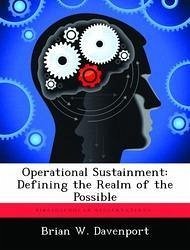This study examines the difference between operational and tactical sustainment in AirLand Battle doctrine. The major focus of the study is to determine if operational sustainment is fully encompassed by its AirLand Battle doctrinal description which includes as major functional elements the following: (1) organization of the theater base, (2) establishment/adjustment of LOC's, (3) management of sustainment priorities, (4) force expansion and reconstitution, and (5) deception. The U.S. Army's FM 100-5, Operations states that "sustainment is fully vital to success at both the operational and tactical levels of war." From this operational-tactical split embodied in the AirLand Battle doctrine, operational sustainment emerges as a distinct U.S. Army logistical concept. However, despite the newness of the term, the functions of operational sustainment have long been required of armies in conducting war. The study uses Rommel's efforts in North Africa in 1941-42 and the Russian efforts at Kursk in 1943 to provide two case studies in which sustainment activities at the operational level of war played major roles. The study concludes that the AirLand Battle doctrinal description of operational sustainment provides a valid focus for logistics at the operational level of war. Deception, however, should not be included as a separate major functional element for operational sustainment, but rather as an important system characteristic that has application in each of operational sustainment's major functional areas.
Hinweis: Dieser Artikel kann nur an eine deutsche Lieferadresse ausgeliefert werden.
Hinweis: Dieser Artikel kann nur an eine deutsche Lieferadresse ausgeliefert werden.








